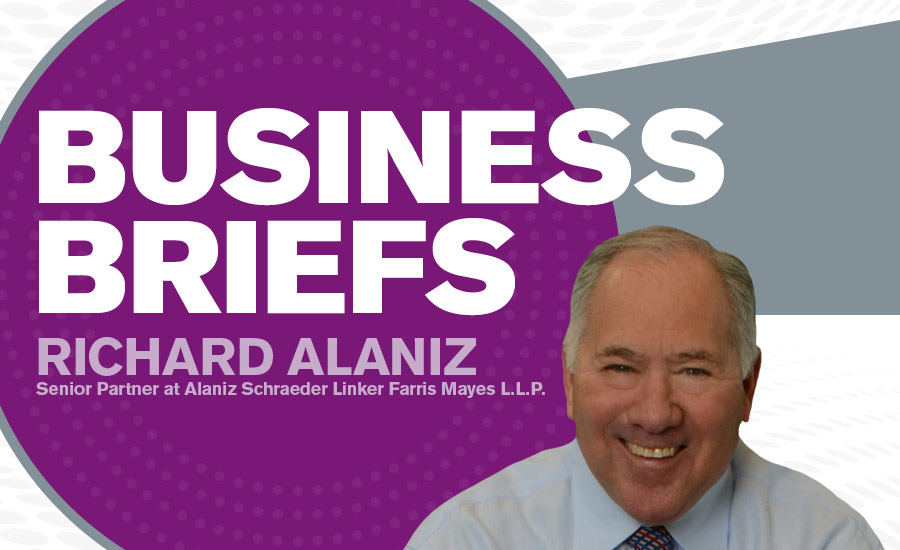Today's employers have an increasingly regulated and overly litigious landscape to navigate in managing their workplace. The continued growth of federal, state, and even local regulatory protections for employees, coupled with an overabundance of lawyers, has made virtually every workplace decision a potential lawsuit.
Most large employers have experience, professional human resource staff to enfore comprehensive and up-to-date employment policies found in the employee handbook. They may also have the support of in-house or outside legal counsel to help with the more difficult decisions. But, what about the small- or medium- sized employers who generally do not have a human resources department and where most decisions regarding employees are made by the owner or plant manager? While some guidance and best practices are often available through their industry or business associations, their potential exposure to legal challenges on employee-related decisions remains significant. However, by implementing, updating, and consistently enforcing five practical and well-known workplace policies, most employers can dramatically decrease the potential that a decision involving an employee will result in a successful legal challenge. These policies should ideally be contained in a more comprehensive employee handbook if possible. The five "must have" policies and how they provide protection are discussed below.
1. No Harassment Policy
Under federal law, Title Vll of the Civil Rights Act, the American With Disabilities Act as amended, and the Age Discrimination In Employment Act, as well as related state laws, harassment based upon a protected status is unlawful. Sexual harassment, the type that has received the greatest attention, is based upon gender and is equally unlawful. The law is now well-established that it is applicable to same sex harassment as well. Bullying is clearly another form of harassment, and with the ubiquitous presence and use of social media, has also become a common workplace problem. If based upon a protected status, bullying goes from workplace misconduct to unlawful discrimination.
Without an all-encompassing no harassment policy that is posted or otherwise widely disseminated, an employer will find it difficult to defend against Equal Employment Opportunity Commission or similar state agency discrimination charges and possible lawsuits alleging unlawful harassment. In fact, the first document requested by investigating agencies in such a case is a copy of the employer's no harassment policy. Having such a policy in place and consistently enforcing it will help provide a reasonable defense against some of the most frequent claims made in today's workplace. Lack of a policy may lend support to a prima facie case of discriminatory harassment.
2. Equal Employment Opportunity Policy
One of the most fundamental of all employment policies is the one assuring all applicants and employees that any decisions affecting them will be made without regard to race, gender, religion, national origin, age, disability, or sexual orientation, as well as any other protected status. All job advertising should, and generally does, include such a statement. It should also appear on the face of any employment application utilized. In short, equal opportunity should be second-nature for anyone in management making any decision that affects an employee. And no company is too small to have such a policy.
3. Complaint Policy and Procedure
Employee problems and concerns are endemic to the workplace, irrespective of size or specific industry. Having a well-known and structured process through which employees can have their concerns fairly addressed, and hopefully resolved, will help avoid potentially more serious repercussions. Too often business owners, especially of smaller companies, rely upon the fact that they have an open-door policy permitting employees to raise any concerns or complaints directly with them. Sometimes the practical effect of such a policy results in what some experts have called, "hiding behind the open door". Employees are sometimes reluctant to enter the manager's office for fear of the consequences. Perhaps they will be found to be at fault. Or even if not, that nothing can be done about their problem. While the door may be open, it may not be used.
If employees are provided a formal, structured process whereby they can verbally, or in writing, bring an issue of concern to management, they will use it. Ideally, it should start with taking the matter to the employee's own supervisor. Then, if needed, escalate it up the management ranks until the matter is fully addressed. Employees should also be free to raise the matter with anyone in management with whom they are comfortable. Sometimes the problem is one involving their own supervisor. Some employees may be more open in speaking to someone of their own gender. The goal of the process is to solve the problem irrespective of how the issue is brought to the attention of management. The complaint and all actions taken to address it should be well documented.
4. Progressive Discipline Policy
Virtually all employee disciplinary actions, especially involving termination, are subject to being second-guessed by some governmental agency or lawyer. This often occurs in the context of a formal charge or complaint filed with a state or federal agency. Whether it is an agency investigation or a lawsuit, the most commonly asked questions are whether the employee was on notice of their unacceptable performance or conduct and whether they were subjected to escalating discipline when they failed to improve. An employer's inability to demonstrate such steps through a well-publicized and consistently applied policy of progressive discipline will likely find that their action, especially a termination, will be ruled to be improper. Frequently, the penalty is reinstatement and back pay for the employee involved.
The most common progressive discipline policies are comprised of a four-step process. A verbal warning escalates to a written warning, which then goes to a final warning, sometimes including a three-day suspension. Every step in the process should be well documented. The process finally culminates in termination. It is generally a good practice to "suspend pending termination" to provide the opportunity to review the entire disciplinary record and related documentation before taking that last critical step. Consistency in applying progressive discipline is crucial. Exceptions will undermine the policy and jeopardize the action taken.
5. Absence and Tardiness Control Policy
As mundane and routine as an absence control policy sounds, it is unfortunately one of the most frequently relied upon employment policies to support a termination decision. It is also a policy that many employers, especially small ones, are lacking — at least in a written form. While leave policies mandated by either federal or state government continue to proliferate, regular employee attendance at work remains a significant problem for many employers. Some might point to the work/life balance that reportedly is so important, especially to millennials, as a reason. However, attendance problems cut across all age groups of employees as well as all types of workplaces.
Most attendance policies involve a set number of points or instances of either tardiness, absence, or both within a set time period that, when exceeded, results in escalating disciplinary action, including termination. Without a policy that is uniformly enforced and well-documented, an employer may be unable to show that a termination was in fact for excessive absences rather than because of a protected status as alleged by a disgruntled employee.
By having in place and consistently applying the five common sense policies cited, an employer will be well prepared to effectively address and perhaps even avoid the vast majority of workplace issues that arise. When employees know that policies are in place that are intended to assure fair treatment for all employees, it is surprising how few problems actually develop.
Publication date: 9/18/2017
Want more HVAC industry news and information? Join The NEWS on Facebook, Twitter, and LinkedIn today!











